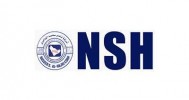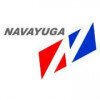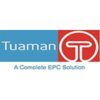Filter interviews by
Mathiyan Construction Interview Questions and Answers for Experienced
Mathiyan Construction Interview Experiences for Experienced
1 interview found
I applied via Naukri.com and was interviewed in Mar 2023. There were 3 interview rounds.

(3 Questions)
- Q1. Which project have you worked on and said
- Q2. Again project company
- Ans. Yes , DHP PROJECT hathijan Ahmedabad Gujarat
- Q3. What is DHP PROJECT
- Ans.
DHP PROJECT is an abbreviation for Design, Hydraulics, and Planning Project.
DHP PROJECT stands for Design, Hydraulics, and Planning Project.
It is a project related to civil engineering and construction.
The project involves designing and planning various aspects of civil engineering projects, with a focus on hydraulics.
It may include designing drainage systems, water supply systems, and stormwater management systems.
The...
(1 Question)
- Q1. Sallary related
Interview Preparation Tips
- Civil Construction
Civil Site Engineer Interview Questions asked at other Companies
Top trending discussions






Interview questions from similar companies

Junior Site Engineer Interview Questions & Answers
Hi Tech Projectsposted on 21 Dec 2024
(1 Question)
- Q1. Draw a Bar bending schedule

Senior HR Executive and Administrator Interview Questions & Answers
L & W Constructionsposted on 31 Mar 2024
I applied via Approached by Company and was interviewed in Mar 2024. There were 2 interview rounds.
(2 Questions)
- Q1. Role related questions
- Q2. Duties of Admin in work place
(1 Question)
- Q1. Role related questions

Project Site Engineer Interview Questions & Answers
Kirby Building Systemsposted on 24 Feb 2024
I was interviewed in Jan 2024.
(2 Questions)
- Q1. As per site conditions. Shaul the technical eshu..
- Q2. All technical issue Solve.
(1 Question)
- Q1. As per site technical essu.

I applied via Recruitment Consulltant and was interviewed in Aug 2023. There were 2 interview rounds.

(6 Questions)
- Q1. What is the types of Compressors?
- Ans.
Types of compressors include reciprocating, rotary, centrifugal, and axial compressors.
Reciprocating compressors use pistons to compress air or gas.
Rotary compressors use rotating mechanisms such as screws or vanes.
Centrifugal compressors use a rotating impeller to create centrifugal force.
Axial compressors use rotating blades to compress air in a straight line.
Examples include reciprocating air compressors, rotary scr...
- Q2. What are the Procedure to install the Centrifugal axial compressors?.
- Ans.
The procedure to install centrifugal axial compressors involves proper planning, alignment, assembly, and testing.
Ensure proper foundation is prepared to support the compressor
Align the compressor with the piping system for proper flow
Assemble the compressor components according to manufacturer's instructions
Test the compressor for performance and efficiency before final installation
- Q3. Types of pump and it's classifications?
- Ans.
Types of pumps include centrifugal, positive displacement, and axial flow pumps.
Centrifugal pumps: use centrifugal force to move fluid through the pump
Positive displacement pumps: move fluid by trapping a fixed amount and forcing it through the discharge port
Axial flow pumps: move fluid parallel to the pump shaft
- Q4. Lifting Plan Procedure?
- Ans.
A lifting plan procedure is a detailed plan outlining the steps and precautions to be taken when lifting heavy objects.
Identify the weight and dimensions of the object to be lifted
Determine the appropriate lifting equipment needed
Assess the location and environment for any obstacles or hazards
Assign roles and responsibilities to team members involved in the lift
Communicate clearly and follow the plan step by step
Conduc...
- Q5. Pumps Capacity?
- Ans.
Pumps capacity refers to the maximum flow rate a pump can handle.
Pumps capacity is typically measured in gallons per minute (GPM) or liters per minute (LPM).
It is important to consider the required flow rate when selecting a pump for a specific application.
Factors such as pump size, motor power, and system pressure affect the capacity of a pump.
For example, a centrifugal pump may have a capacity of 500 GPM, while a dia
- Q6. Methods statement of rotating and static equipment.
- Ans.
Methods statement for maintaining rotating and static equipment in mechanical engineering.
Regular inspection and maintenance schedules for both rotating and static equipment
Use of proper lubrication for rotating equipment to prevent wear and tear
Checking alignment and balance of rotating equipment to ensure smooth operation
Testing and calibrating static equipment for accuracy and efficiency
Following manufacturer's guid...
Interview Preparation Tips

I applied via LinkedIn and was interviewed in Jul 2023. There were 3 interview rounds.

(2 Questions)
- Q1. Tell me about your self.
- Q2. Current and expected CTC. Notice period.
(4 Questions)
- Q1. LOD levels and their technical names.
- Ans.
LOD levels are used in BIM to specify the level of detail in a model, ranging from LOD 100 to LOD 500.
LOD 100 - Conceptual design with basic massing and spatial relationships
LOD 200 - Basic geometric elements with approximate quantities and sizes
LOD 300 - Accurate model with specific system information and quantities
LOD 400 - Fabrication level of detail with detailed elements and connections
LOD 500 - As-built model wit
- Q2. Type and instance parameters.
- Q3. What is workset in Revit.
- Ans.
Workset in Revit is a way to organize and manage elements within a project.
Worksets allow users to control visibility, editing permissions, and ownership of elements
They can be used to divide a project into manageable sections for team collaboration
Examples include creating worksets for different disciplines like architecture, structure, and MEP
- Q4. BIM 360 and it's propose.
- Ans.
BIM 360 is a cloud-based platform for construction project management, collaboration, and data sharing.
BIM 360 allows for real-time collaboration among project teams
It provides tools for document management, design coordination, and quality control
Users can access project information from anywhere, at any time
Interview Preparation Tips


(3 Questions)
- Q1. What is orifice std and types of taps
- Ans.
Orifice std refers to standard orifice sizes used in engineering. Types of taps include flange taps, corner taps, and D and D/2 taps.
Orifice std refers to standard sizes of orifices used in flow measurement
Types of taps include flange taps, corner taps, and D and D/2 taps
Flange taps are used for large pipes, corner taps for small pipes, and D and D/2 taps for general applications
- Q2. What is pressure gauge operating range
- Ans.
Pressure gauge operating range refers to the minimum and maximum pressure values that the gauge can accurately measure.
Pressure gauge operating range is typically specified by the manufacturer.
It is important to ensure that the pressure being measured falls within the gauge's operating range to ensure accurate readings.
For example, a pressure gauge with an operating range of 0-100 psi should not be used to measure pres
- Q3. What is straight length requirements for orifice flow element
- Ans.
Straight length requirements for orifice flow element ensure accurate measurement by allowing flow to stabilize before reaching the element.
Straight length requirements typically range from 10 to 44 pipe diameters upstream and 5 to 22 pipe diameters downstream of the orifice.
These requirements help prevent flow disturbances and ensure accurate measurement of flow rate.
For example, if the pipe diameter is 4 inches, the ...
(3 Questions)
- Q1. Salary expectations and current ctc
- Q2. Describe about yourself and other information
- Q3. Why we should hire you and other similar questions.
Interview Preparation Tips

Planning Engineer Interview Questions & Answers
GA Infra Private Limitedposted on 22 Jul 2023

(3 Questions)
- Q1. Can you fill measurement book provided by client?
- Ans.
Yes, I am able to fill measurement books provided by clients.
I have experience in accurately recording measurements and quantities in measurement books.
I am familiar with the format and requirements of measurement books provided by clients.
I ensure all necessary details are included in the measurement book, such as date, location, description of work, measurements, and signatures.
I am proficient in using measurement to...
- Q2. What is Rolling margin?
- Ans.
Rolling margin is the difference between the planned value and the earned value at a specific point in time.
Rolling margin helps in measuring the efficiency of a project by comparing planned and actual progress.
It is calculated by subtracting the earned value from the planned value.
A positive rolling margin indicates that the project is ahead of schedule, while a negative rolling margin indicates that the project is be
- Q3. What are the consumption ratios in civil work
- Ans.
Consumption ratios in civil work refer to the quantities of materials used in construction projects.
Consumption ratios vary depending on the type of civil work being done.
Common consumption ratios include cement:sand:aggregate ratios for concrete mixes.
Other consumption ratios may include steel reinforcement ratios for structural elements.
Accurate consumption ratios are essential for cost estimation and project plannin
Interview Preparation Tips

Procurement Engineer Interview Questions & Answers
Keller Ground Engineeringposted on 2 May 2023

(1 Question)
- Q1. As I applied on experience basis they ask fundamentals of Procurement process, their company requirements and my experience over it, willing to relocate at remote locations, etc
(1 Question)
- Q1. My family background, reason to leave current job, salary expectation and it's justification, previous year performances in company.
Interview Preparation Tips

Assistant Manager HSE Interview Questions & Answers
Coastal Marine Construction & Engineeringposted on 9 Nov 2024
I applied via Naukri.com and was interviewed before Nov 2023. There were 4 interview rounds.
(2 Questions)
- Q1. What is safety policy?
- Ans.
Safety policy is a set of rules and guidelines implemented by an organization to ensure the safety and well-being of its employees.
Safety policy outlines the organization's commitment to providing a safe work environment.
It includes procedures for identifying and mitigating hazards in the workplace.
Safety policy also defines roles and responsibilities for employees in maintaining safety standards.
Regular training and c...
- Q2. What is risk assessment?
- Ans.
Risk assessment is the process of identifying, evaluating, and prioritizing potential risks in order to minimize or eliminate them.
Identifying potential hazards and risks in the workplace
Evaluating the likelihood and severity of these risks
Prioritizing risks based on their potential impact
Developing strategies to control or mitigate the identified risks
Regularly reviewing and updating the risk assessment process
Example...
(2 Questions)
- Q1. What is your management style?
- Q2. How do you Access workplace Hazards?
- Ans.
Access workplace hazards by conducting regular inspections, reviewing incident reports, and involving employees in hazard identification.
Conduct regular workplace inspections to identify potential hazards
Review incident reports to learn from past incidents and prevent future ones
Involve employees in hazard identification through training and reporting systems
(2 Questions)
- Q1. What is confined space ?
- Ans.
Confined space is an area that is not designed for continuous occupancy, has limited entry and exit points, and may have poor ventilation.
Confined spaces are typically small and enclosed, making it difficult to enter and exit.
These spaces may contain hazardous substances or conditions that can be harmful to workers.
Examples of confined spaces include storage tanks, silos, tunnels, and sewers.
- Q2. What is Hazards?
- Ans.
Hazards are potential sources of harm or danger that can cause injury, illness, or damage to property.
Hazards can be classified into physical, chemical, biological, ergonomic, and psychosocial categories.
Examples of hazards include slippery floors (physical), toxic chemicals (chemical), infectious diseases (biological), poor ergonomics (ergonomic), and workplace stress (psychosocial).
(2 Questions)
- Q1. What is safety Audit?
- Ans.
Safety audit is a systematic evaluation of an organization's safety management system to ensure compliance with regulations and identify areas for improvement.
Safety audit involves reviewing policies, procedures, and practices related to safety in the workplace.
It includes inspecting physical conditions, equipment, and work processes to identify hazards.
Auditors assess the effectiveness of safety training programs and ...
- Q2. What is attitude?
Interview Preparation Tips
Mathiyan Construction Interview FAQs
Tell us how to improve this page.
Interview Questions for Popular Designations
People are getting interviews through
Interview Questions from Similar Companies
Mathiyan Construction Reviews and Ratings
based on 19 reviews
Rating in categories
|
Accountant
4
salaries
| ₹4.2 L/yr - ₹4.2 L/yr |
|
Structural Engineer
4
salaries
| ₹2.4 L/yr - ₹6.5 L/yr |
|
Junior Engineer
4
salaries
| ₹2.2 L/yr - ₹3.6 L/yr |
|
Structure Site Engineer
4
salaries
| ₹2.6 L/yr - ₹3.2 L/yr |
|
HR Executive
3
salaries
| ₹3.1 L/yr - ₹4.2 L/yr |

Sterling & Wilson

Nasser S. Al Hajri Corporation

Navayuga Engineering Company

B.L. Kashyap & Sons
Calculate your in-hand salary
- Home >
- Interviews >
- Mathiyan Construction Interview Questions >
- Mathiyan Construction Interview Questions for Experienced



